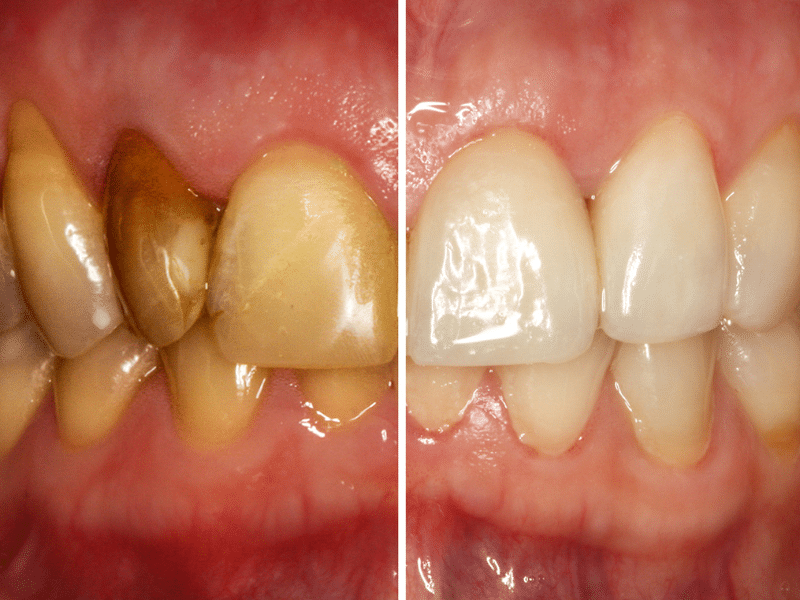Restoring your smile isn’t just about fixing what’s broken. It’s a commitment to long-term oral health, comfort, and function. When done right, the transformation between before and after teeth restoration can be dramatic, but results vary depending on several behind-the-scenes factors. Your choices, your dentist’s approach, and even your daily habits all play a role in how successful and lasting your restoration will be. Some patients achieve near-perfect results that last for years. Others face issues such as discomfort, poor fit, or premature failure. What makes the difference isn’t luck — it’s preparation and consistency. From your initial consult to your daily brushing routine, each step contributes to whether you’re smiling or sighing months down the track. This article explores the most influential factors that impact your restoration results — and how you can stay ahead of common pitfalls.
How does daily oral care affect the success of teeth restoration before and after?
Good home care isn’t optional — it’s essential. Once your dentist finishes the job, what you do next determines how long your results will hold up. Daily habits that support your restoration include:
- Consistent brushing habits: Brushing twice daily with fluoride toothpaste keeps plaque from building up around restored teeth.
- Effective flossing routines: Flossing daily removes debris between teeth and helps prevent decay at the gumline.
- Antibacterial mouthwash use: Rinsing reduces bacteria that can weaken the bond between the tooth and restoration.
- Diet adjustments: Cutting down on sugar and acidic drinks lowers your risk of recurrent decay around restoration edges.
Neglecting these habits can make restorations fail far earlier than expected. Poor oral hygiene is one of the leading reasons restorations don’t last. Stay sharp by sticking to a daily routine — it’ll save you both money and future discomfort. To deepen your understanding, you must know the importance of preventive care in long-term oral restoration success, especially when planning your post-treatment habits.
How do restoration materials affect the results of teeth restoration?
Not all dental materials offer the same performance, and the right match depends on where the tooth is, what you eat, and how you use your teeth. Standard materials and their impact include:
- Composite resin: Affordable and natural-looking, but it can stain or wear down more quickly.
- Porcelain: Offers excellent aesthetics and decent durability, especially for visible teeth.
- Zirconia: One of the strongest options for molars, it resists cracks and chips even under high bite pressure.
- Gold alloy: Less common now, but extremely long-lasting and biocompatible for those who don’t mind the look.
Choose based on function as much as appearance. Inappropriate material for your chewing habits or tooth location can lead to fast failures and more costly fixes. When considering a repair, it’s essential to weigh the options, as the best choices for repairing a cracked dental crown can help you compare what suits your needs in terms of both budget and durability.
What can patients do to maintain results after teeth restoration?

Even the most advanced work can fall apart without a bit of regular effort. Your dentist’s work sets the foundation, but you’re in charge of maintenance. Helpful habits to preserve your results include:
- Regular dental visits: Schedule check-ups every six months to track wear, check margins, and spot any gum recession early.
- Night-time protection: Use a custom nightguard if you grind your teeth — it’s a silent destroyer of restorations.
- Careful chewing: Avoid biting into hard foods like nuts or using your teeth to open packaging.
- Rinsing after meals: Especially after acidic or sticky foods, rinsing can reduce wear and acid erosion.
These steps take minutes but add years to your smile. Skipping maintenance can undo thousands of dollars in dental work faster than you’d expect.
What recovery advice do dentists recommend after a restoration?
The post-procedure period is crucial. Your teeth and gums need time to heal, and your dentist’s recovery plan is there to help everything settle correctly. Key aftercare tips include:
- Soft food diet: Stick to soft foods for the first 24–48 hours to avoid stressing fresh restorations.
- Salt water rinses: Gentle rinses promote healing and reduce swelling without irritating sensitive gum areas.
- Avoid chewing on the treated side: This protects the restoration while the adhesive sets fully.
- Monitor discomfort: Mild soreness is normal, but worsening pain should be reported quickly.
Rushing your recovery or ignoring discomfort can lead to failed restorations or misaligned bites that require correction. Understanding what to expect helps you plan more effectively, and following the right guide to dental procedures commonly used in restorations can help you recognise what’s normal and what’s not.
How long does it typically take for restored teeth to settle?
Every restoration comes with a period of adjustment — knowing what’s normal helps avoid unnecessary panic. Typical settling times by procedure:
| Restoration Type | Settling Time | Notes |
| Fillings | 1–2 days | Minor bite adjustments may be needed |
| Crowns/Inlays | 1–2 weeks | It may feel bulky before settling |
| Veneers | 5–10 days | Mild sensitivity is common initially |
| Implants | 3–6 months | Requires osseointegration with bone |
Adjustment issues beyond these windows should be reviewed and addressed. Persistent discomfort or bite misalignment may signal an issue that needs early intervention. To dig deeper into how outcomes can vary, it’s helpful to explore the before and after teeth restoration procedures that you should know to prepare for your next appointment.
What should you discuss with your dentist before choosing a restoration option?
Preparation makes all the difference. Before you decide on a treatment, arm yourself with the right questions to ensure everything suits your lifestyle. Be sure to ask about:
- Material pros and cons: Each option varies in cost, durability, and aesthetics.
- Expected longevity: Understand the average lifespan of your chosen restoration.
- Post-care needs: Some options require more maintenance than others — know what you’re signing up for.
- Insurance and costs: Get clarity on what’s covered and what’s out of pocket.
Failing to ask key questions can leave you with a solution that doesn’t align with your expectations or habits.
Final thoughts
Your smile’s success story isn’t written in the dentist’s chair — it’s shaped by what happens before, during, and after the procedure. From selecting the right material to following recovery advice and maintaining consistent hygiene, each decision plays a crucial role in determining how your restored teeth look, feel, and function over time. If you’re planning a procedure or looking to maintain the results of past work, make sure you’re informed and proactive at every step. For personalised insights and long-term strategies, you can learn how Marsfield Dental Care helps patients restore their smile with confidence and clarity.

